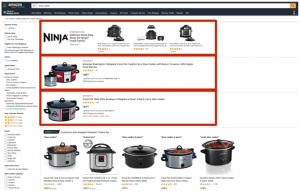— December 8, 2017
If you decided to promote your website online via search engine optimization and sell products or services to clients, first you need to conduct a profound research. It is clear that when it comes to SEO, every niche and every business has competitors. In order to build a sound SEO strategy that will help your site reach the top, you need to have a detailed information about the situation on the market and in your niche. To succeed in creating the strategy, a deep and worthy competitors’ research is a must. The algorithm of your actions should be the following:
Keywords and Semantic Kernel
First of all, you need to gather all relevant keywords. This process is called a creation of a semantic kernel. To start creating the semantic kernel for your website, you need to collect all the key requests from google, but only those which are somehow related to your niche/business. To do it, you may use Google Keyword Planner (it is free ) or it is better to use more professional tool Ahrefs however, it is paid.
Using these tools and their features, you will obtain a raw variant of your website semantic kernel. A semantic kernel is created in order to see the amount of search requests (demand on the market). In addition, you will clearly see the picture of competitiveness and a situation in a whole. Depending on the tool you’ve used, the level of competition on the market may be:
For Google Keyword Planner:
-
-
- high
- medium
- low
-
For Ahrefs it is always reflected in the ratio of search requests.
The next step is gathering the information and conducting the the analysis of competitors’ positions by the relevant keywords which were gathered previously.
Competitors’ Positions
When your semantic kernel is ready, there is time to analyze your top ten competitors. The keywords you’ve gathered previously will give you a clear picture of your top ten competitors depending on the search requests you want to be promoted by and grow to a top.
It is vital to understand which keywords should NOT be taken to promote your website. It may be non-commercial search requests or high-frequency keywords. On top of this, you may check trusted websites, for example, Yelp or Amazon.
In addition, with the help of Ahrefs you may track the keywords which your competitors are using to get to the tops of google ranking. It is always a huge “plus” for your competitors’ research. Firstly, you will expand your previously created semantic kernel and will be able to target more keywords as well as split them effectively between the pages of your site. Secondly, you’ll exclude non-commercial, informative or highly competitive keywords.

On-page SEO
On-page optimization is a very important aspect of promoting your site and will provide an opportunity to see what your competitors are up to:
Site structure
Viewing and analyzing the structure of competitors’ sites will give you an idea of what your site should look like, what content should be on the page in order to get to the top of the search results. Do not forget that for you to get to the top, you will need to make your site better than your competitors’ in terms of structure, nesting level of the pages and usability.
Internal linking
Be sure to review the structure of internal linking of your competitors’ sites; this will help you understand how to cluster keywords and how to distribute them across the pages of your site.
Page loading speed
A free and fast way to analyze the competitor’s site is Google PageSpeed Insights. With the help of this tool, you will see the main disadvantages of competitors in the on-page optimization like errors on different pages, image sizes, and adaptive design features for mobile devices, tablets, and other gadgets. Keep in mind a need to create a mobile version of your website since every year more and more people buy goods and services using mobile devices. This will help you significantly increase the target audience and will also add you points in the overall ranking in the search engines.
Multiregionality and multilanguage
This aspect is very important if your business is related to international trade or the content of your website can be useful to users of other countries.
Traffic
In order to view and analyze the traffic of competitors’ sites as well as its sources, we will use the free extension for Chrome and Opera – Similarweb. This tool will allow us to see how much traffic the competitor’s site receives from the search, direct traffic, referral (through affiliate programs) and traffic from social networks. This information will give you an idea of where your potential consumer is located and what channels of advertising are better to use to get more visitors to your website.
Links
Analyze the links of your competitors, see the resources they are placed on. The most successful strategy for your business will be the analysis and formation of a higher-quality trust and other factors of the links profile of your site.
Social Signals
In recent years, social networks are increasingly getting more integrated into people’s lives, and there are more and more potential consumers of your goods and services there. Share news about your company, discounts, promotions and other interesting offers; this will give you the opportunity to find more customers in different social networks.
Conclusion
Following the above recommendations, you will get the opportunity to see a complete picture of what is happening in your competitive environment, to build a short-term and long-term strategy for a website promotion and also distribute your advertising budget as efficiently as possible to attract only targeted traffic to your website.
Digital & Social Articles on Business 2 Community
(97)





